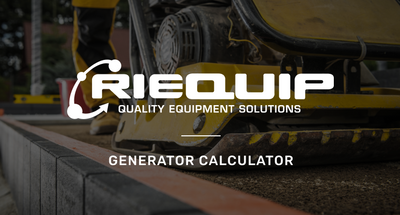Laser Levels: Precision in Construction
Achieving precise measurements and alignments is key to delivering professional results in construction. Enter laser levels—the go-to tools for ensuring accuracy and efficiency on job sites. Used in construction and surveying, laser levels project red or green lines onto surfaces to provide accurate readings across different surfaces.
We’ll go over how they work, different types of laser levels, their applications, and tips on how to make the best use of them.
What are Laser Levels?
A laser level emits a focused beam of light that can be used as a visual guide when a straight and level reference point is needed.
They are usually made with small, low-intensity diodes and are powered using rechargeable batteries. The first laser levels were limited to indoor usage due to low output, but modern iterations are powerful enough for both indoor and outdoor usage.
Most laser levels emit red beams of light, but some manufacturers are offering green lasers that are brighter and have higher visibility than their red counterparts. However, the power needed to emit these brighter green beams typically results in lower battery life.
As with any laser, looking directly at the light can damage your sight, so if you are operating a laser level, take care to not look directly at the laser and take efforts to make sure those around you don’t look at the laser. The laser should never be directly pointed at another person.
Types of Laser Levels
Laser levels come in various types, each designed to suit different construction needs and project requirements. Let’s explore the four main types of laser levels and their ideal applications.
Rotary Laser Levels
Rotary laser levels emit a 360-degree horizontal or vertical laser beam, rotating repeatedly to provide a complete reference plane. These levels are ideal for outdoor use and large-scale projects, such as grading, excavation, and construction of foundations. They offer high accuracy and versatility, making them vital tools for professionals working on horizontal and vertical alignments over long distances.
Line Laser Levels
Line laser levels project straight horizontal or vertical lines onto surfaces, providing precise reference points for alignment tasks. They are commonly used for indoor applications, such as installing cabinets, shelves, and tiles, where straight lines are crucial for achieving a professional finish. Line laser levels are compact, lightweight, and easy to operate, making them popular among both professionals and DIY enthusiasts.
Dot Laser Levels
Dot laser levels emit multiple laser dots at precise points, allowing users to establish reference points for layout and alignment tasks. They are versatile tools suitable for both indoor and outdoor use, offering high visibility and accuracy over short to medium distances. Dot laser levels are commonly used in carpentry, electrical, and plumbing work, where pinpoint accuracy is essential for ensuring precise positioning of fixtures and components.
Combination Laser Levels
Combination laser levels integrate features of rotary, line, and dot lasers, offering versatility for a wide range of applications. These levels allow users to switch between rotary, line, and dot modes to suit specific project requirements. Combination laser levels are ideal for professionals who require flexibility and efficiency in their work, as they can tackle various tasks with a single tool.
Applications of Laser Levels
The versatility of laser levels lend themselves to a wide array of applications and projects. Let’s explore some common applications where they shine:
Construction
Laser levels play a crucial role in ensuring precise measurements, alignments, and level surfaces. They are used for tasks such as setting foundations, grading, aligning walls, installing ceilings, and laying out plumbing and electrical lines. They improve construction efficiency, accuracy, and overall project quality, saving time and reducing errors.
Interior Design and Renovation
Laser levels are valuable tools for interior designers and renovators, helping them achieve straight lines, accurate measurements, and level surfaces. They are used for tasks such as installing flooring, tiles, cabinets, shelves, and trim work. They ensure professional-grade precision in interior design projects, enhancing aesthetics and functionality while minimising installation errors.
Landscaping and Outdoor Projects
In landscaping and outdoor projects, laser levels are employed for grading, levelling, and aligning surfaces. They help landscapers create uniform slopes, terraces, and drainage systems, ensuring proper water runoff and erosion control. They are also used for installing retaining walls, fences, decks, and outdoor structures, providing accurate reference points for construction in outdoor environments.
Surveying and Engineering
Surveyors and engineers utilise laser levels for precise measurements, alignments, and topographic mapping. Laser levels help establish benchmarks, set elevations, and create contour lines in land surveying and civil engineering projects. They facilitate accurate site assessments, construction layout, and infrastructure planning, contributing to successful execution of surveying and engineering tasks.
Tips for Maximising the Utility of Laser Levels
Here are some tips that can help you get the most out of your laser level in your next project:
1. Understand your Laser Level
Before using your laser level, take the time to read the user manual and become familiar with its features, settings, and limitations. Understanding how your laser level works will help you achieve better results and avoid potential errors during operation.
2. Choose the right Laser Level for the Job
Select the right laser level for your specific project. Consider factors such as the required range, accuracy, and beam visibility when choosing between rotary, line, dot, or combination laser levels.
3. Make sure to Calibrate
Calibrate your laser level regularly to maintain accuracy and precision. Check the level's calibration before each use, especially if it has been transported or subjected to rough handling. Proper calibration ensures that your laser level delivers reliable results.
4. Use a Stable Mounting Surface
For accurate measurements, mount your laser level on a stable surface or tripod to minimise vibrations and movement during operation. Ensure that the mounting surface is level and secure to prevent the laser level from shifting or tilting during use.
5. Optimise Battery Life
Maximise the battery life of your laser level by using rechargeable batteries and turning off the device when not in use. Keep spare batteries on hand to avoid interruptions during critical tasks and ensure constant operation on job sites.
6. Regular Maintenance and Cleaning
Perform routine maintenance and cleaning on your laser level to keep it in optimal condition. Remove dirt, dust, and debris from the laser lens and housing regularly to prevent interference with the laser beam and maintain accuracy.
Final Thoughts
Whether you're working in the construction industry, interior design, landscaping, or surveying and engineering, laser levels offer unmatched accuracy and convenience, making them essential assets for any job site.
If you’re in the market for a laser level for your next project, Riequip has a wide range of laser levels and accessories to make your next job accurate and precise. Browse our selection today.


